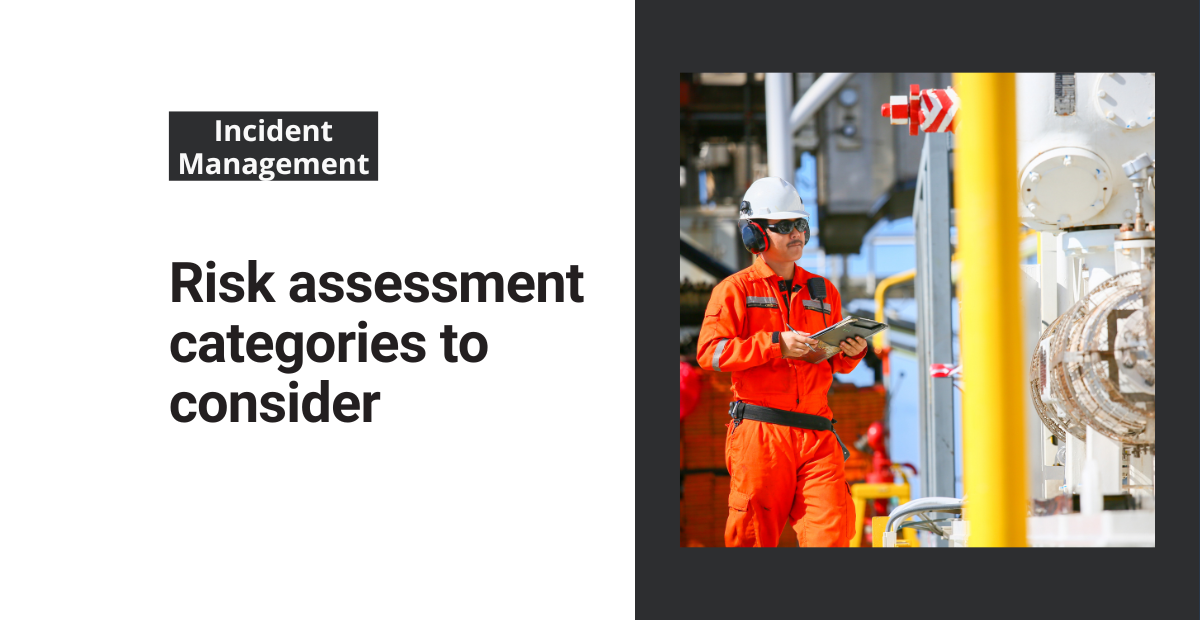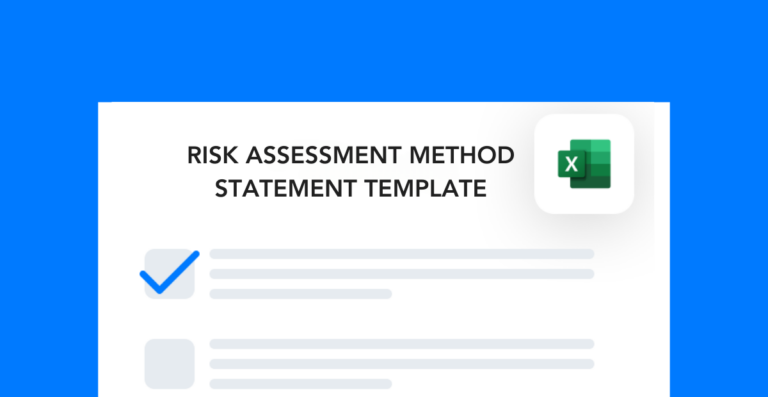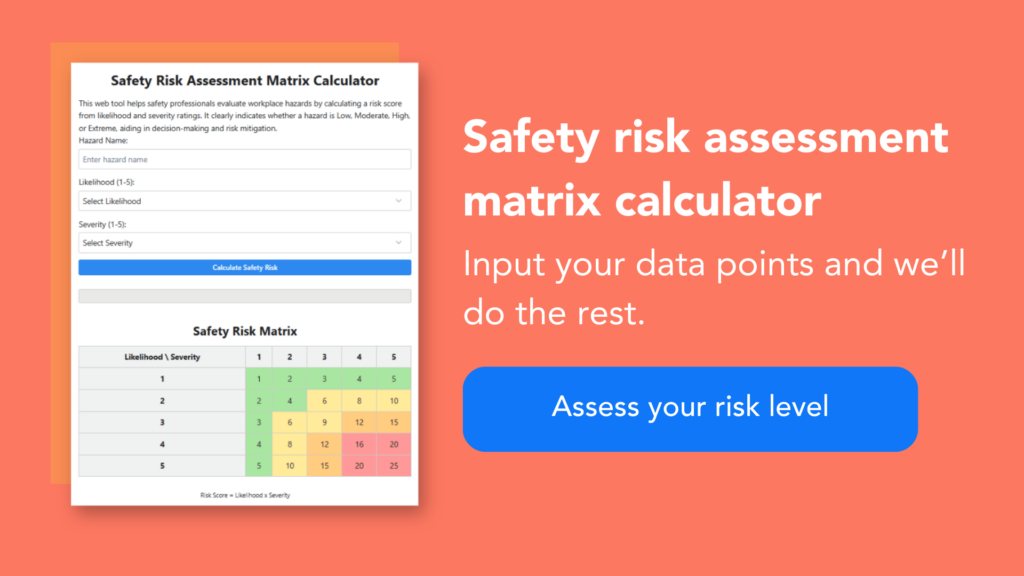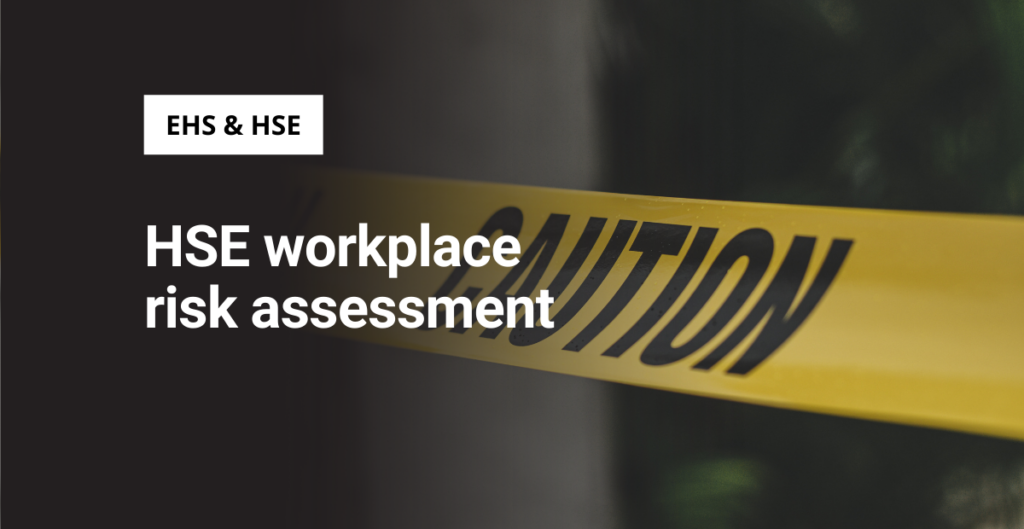There are many opinions on the best way to categorize workplace risks. But the direction you choose will largely depend on the type of variables you’re dealing with. Below are some of the different risk assessment categories that you can use to improve your operations.
Free template!
Use this template to create a risk assessment method statement for your facility. Consider including all relevant categories you identify.
Qualitative versus quantitative
The most common risk assessments categories are qualitative and quantitative evaluations. A qualitative assessment focuses on anecdotal evidence and personal observations to form conclusions. A quantitative assessment uses hard data to determine risk levels, falling under distinct risk assessment categories.
Examples of qualitative variables include:
- Interviews with employees
- First-hand observations of practices, systems, etc.
- Written policies
And these are some examples of quantitative variables:
- Revenue performance
- Safety incident rates
- Employee turnover
- Regulatory citations
You need a mixture of both these types of risk assessments to get a full picture of your business. Especially if you’re trying to tackle an existing problem, it’s important that you use data and employee interviews to inform the decision-making process when dealing with risk assessment categories.
General versus site-specific
Another valuable distinction to make is between general and site-specific workplace risks. Basically, the “general” category includes broad risks that apply to many businesses. Some of these include:
- Regulatory requirements
- HR-related topics
- Overall business performance
- Employee health and wellbeing
When performing a general risk assessment, you’ll be looking at variables from the macro level. Site-specific risk assessments, on the other hand, have a very narrow lens. They focus on things like:
- Site machinery and equipment
- Individual departments/work areas
- Proprietary processes and systems
- Company culture and policies
Unlike generic risk assessments, site-specific ones will require you to determine your own thresholds for risk. In other words, what is considered a neutral environment/condition? Having a clear definition of site-specific risk levels will help you rebalance areas that aren’t within your limits, according to the categories assessed.
Planned versus dynamic risk assessment categories
Most risk assessments fall into the “planned” category, meaning they’re proactive and done before incidents occur. Dynamic risk assessments, however, are those that happen in the moment as the response to an incident. Both planned and dynamic types are important for addressing diverse risk assessment categories.
During a planned risk assessment, you’ll have more access to information, things like:
- EHS metrics
- Budgets
- Spending reports
- Sales reports
This allows you to do an extremely thorough assessment and frees you from the constraints of time. Performing a dynamic risk assessment can be more difficult if you don’t have immediate access to additional data, a challenge faced in various risk assessment categories.
Instead, you’ll depend on context clues and your personal observations to make the assessment and use it to drive your decision-making process. The important thing is that you take notes that you can later translate into action items.
Acting on risk assessment categories
Using the information from these different risk assessment categories, you should have a comprehensive overview. Once you’ve collected each assessment, it’s critical to create action items that reduce the level of risk for your operation.
Typically, they can include everything from cost reduction measures to safety policies. Morever, the great thing about risk assessment is that it applies to all areas of the business. Don’t limit yourself to assessment of the financial performance of your company. Instead, consider all areas of the business to create a winning strategy for prolonged success within the appropriate risk assessment categories.






